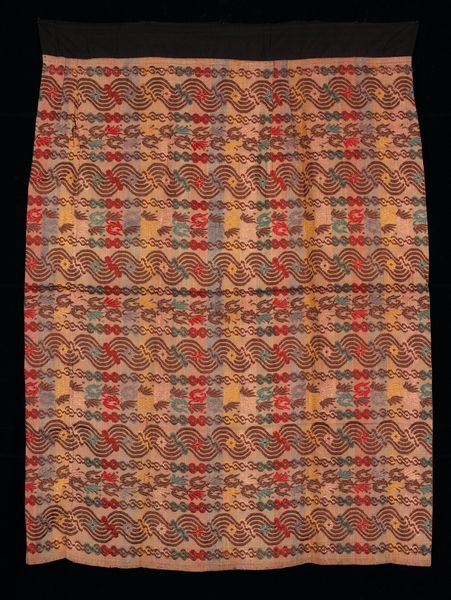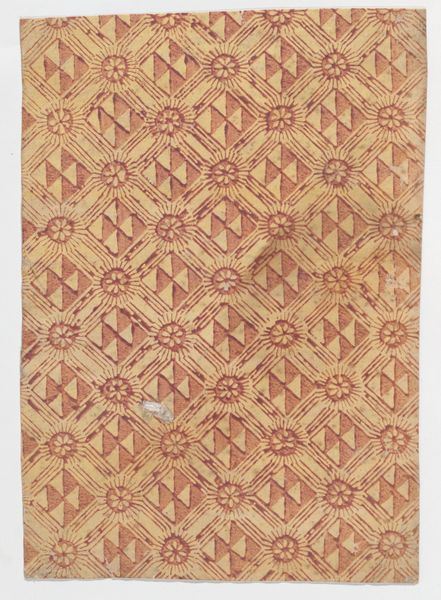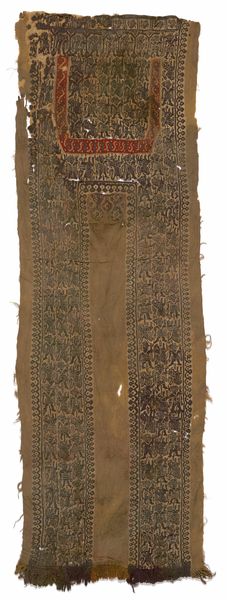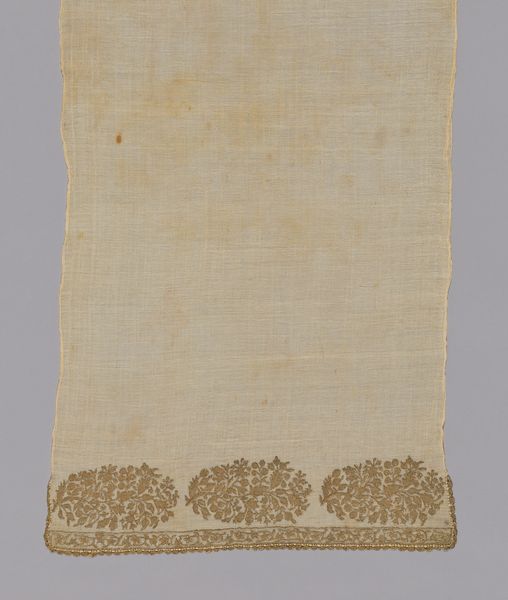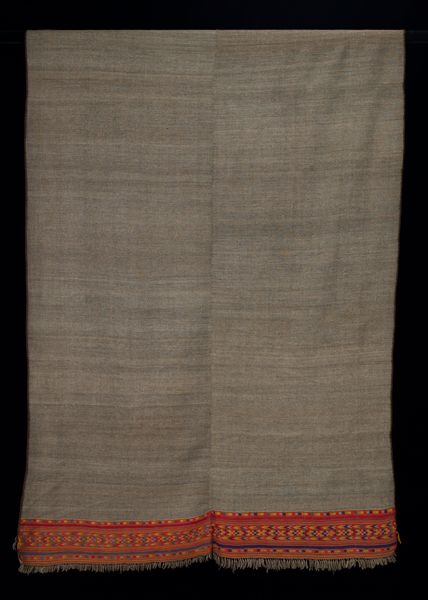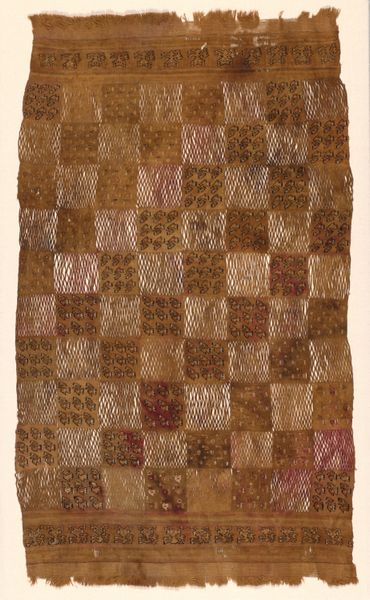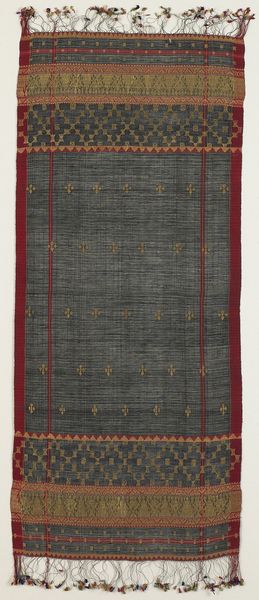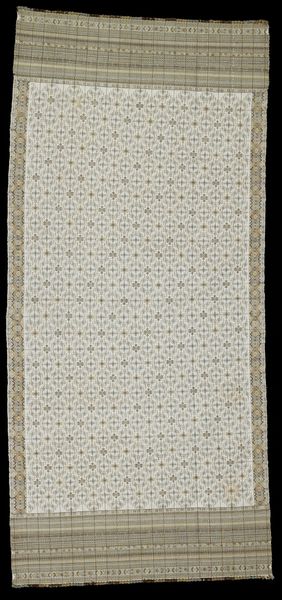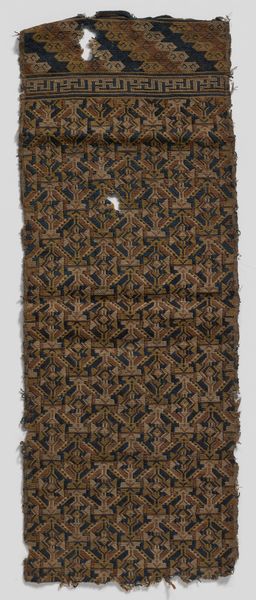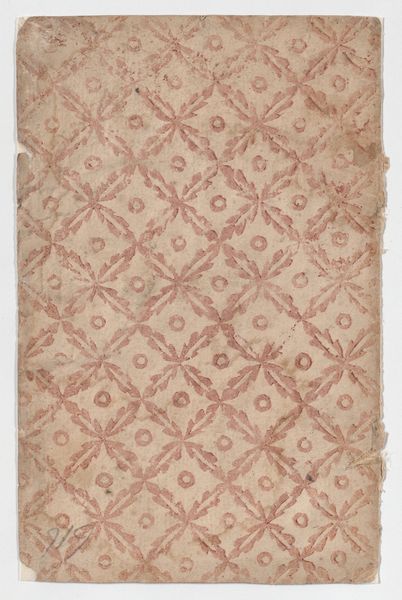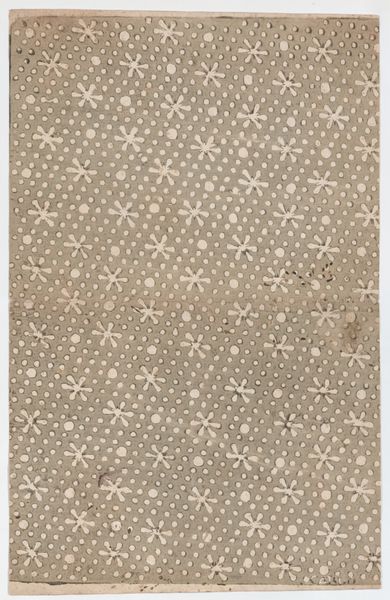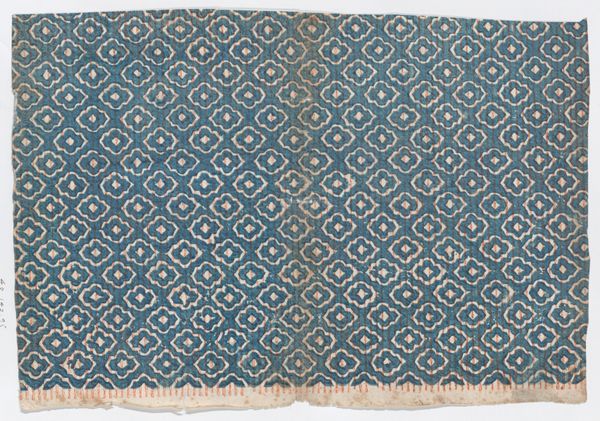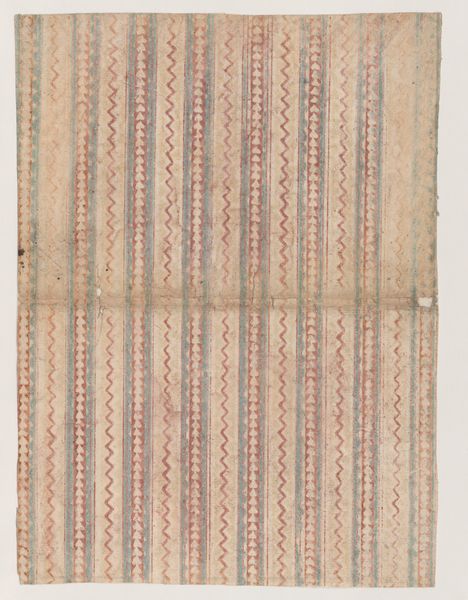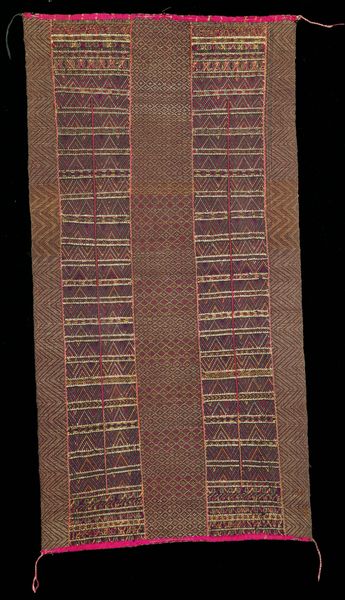
fibre-art, weaving, textile
#
african-art
#
natural stone pattern
#
wood texture
#
fibre-art
#
naturalistic pattern
#
pattern
#
weaving
#
textile
#
organic pattern
#
geometric
#
repetition of pattern
#
wooden texture
#
pattern repetition
#
imprinted textile
#
layered pattern
#
organic texture
Dimensions: 23 7/16 x 29 in. (59.5 x 73.7 cm) (without fringe)
Copyright: Public Domain
Editor: Here we have an interesting textile piece, a “Currency cloth” from around the 19th century, attributed to the Ambundu people. I find the geometric patterning quite striking. What elements of its composition stand out to you? Curator: The most compelling aspect is undoubtedly the relationship between the structural grid and the subtle variations within each unit. Notice the meticulous repetition of the lozenge and rectangular shapes, creating a field that invites prolonged visual scanning. It generates visual interest despite its relatively limited color palette. Editor: It's definitely repetitive, but in a pleasing way, not monotonous. The slight imperfections in the pattern must be intentional or reflect an organic design process. Curator: Precisely. Consider the warp and weft of the textile itself. The texture introduces an element of chance and variation. There is a palpable tension between the imposed geometric order and the inherent qualities of the woven material, generating a dynamic surface. Are the colours merely functional, or can they inform a symbolic system? Editor: That's a great question, the muted earth tones give a kind of gravity. How does this formal approach enhance our understanding of its purpose as “currency?" Curator: By attending to its compositional integrity, the "currency" reveals an investment in aesthetic refinement. The formal qualities intimate this cloth transcends simple utility, gesturing to broader symbolic or social significance beyond straightforward exchange. We have to study these compositional choices that have become embedded in history, even within our everyday actions. Editor: I now have a better appreciation for the formal dynamics at play beyond just simple functionality. The cloth's woven structure becomes so much more intricate and interesting with what you’ve shared.
Comments
No comments
Be the first to comment and join the conversation on the ultimate creative platform.
